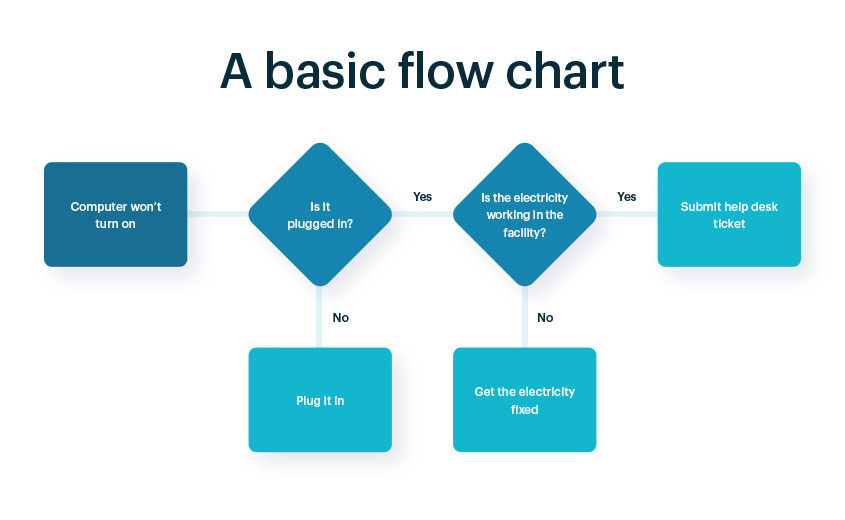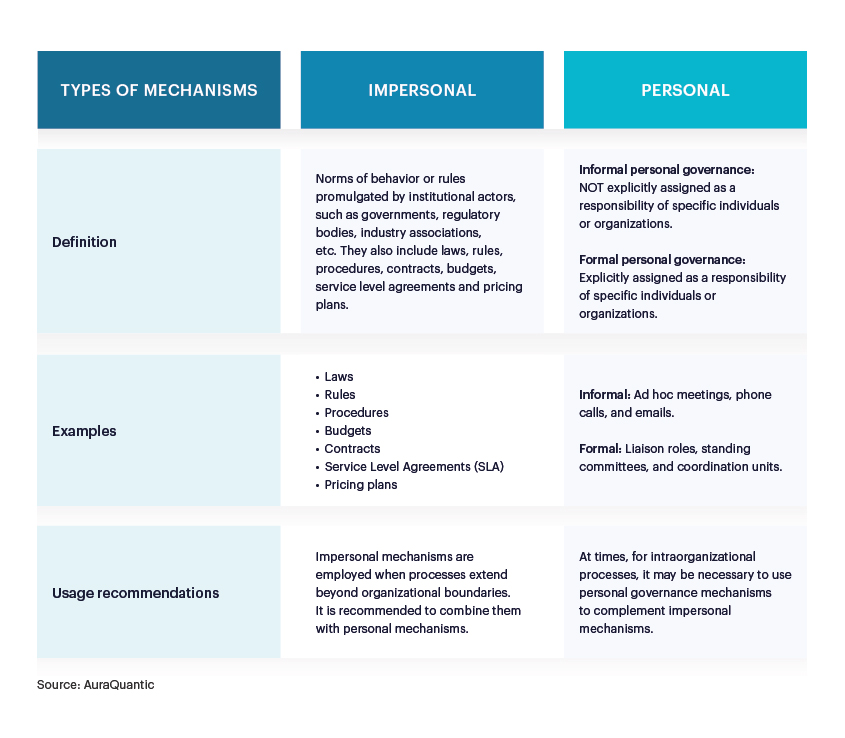Business Process Management Governance: How it helps to improve the performance of business operations

Business process management governance or BPM governance is about establishing the appropriate structures, metrics, roles, and responsibilities to manage and measure the performance of business processes from start to finish.
Therefore, its main goal is to ensure that processes – a set of actions with a certain purpose – are designed and executed efficiently and effectively and undergo continuous improvement.
But how can companies and organizations optimize their processes, especially in large-scale projects with extensive cross-functional collaboration? The solution is to implement a Business Process Management Suite (BPMS).
If you want to know more about this topic, we invite you to continue reading this publication in which we explore the concept of business process management governance and analyze the impact of BPM suites on process modeling, automation, measurement, management, and improvement.
Key concepts to understand business process management governance
Although at the beginning of this publication, we gave a brief explanation of the meaning of the term “business process management governance”, it is worth recapping what is meant by “business processes” and their main elements, according to the international standard for process modeling known by the acronym BPMN (Business Process Modeling Notation).
A business process is a set of tasks (activities) performed by a user and/or system in a sequential order, under certain, previously established conditions (rules), and which are driven by external events that initiate the process. In addition to fulfilling a specific purpose, business processes are characterized because they are transversal to the entire organization and always generate value for the customer, which can be internal or external.

Governance, on the other hand, can be understood in several ways. Generally, it is used in situations where individuals, groups or organizations that need direction, coordination and control are partially or completely autonomous. When applied to both intra-organizational and inter-organizational business processes, it implies that there must be vertical and horizontal coordination between the different units.
Additionally, governance can refer to the laws, regulations, standards and contracts that serve to organize the relationships between citizens and legal entities, the processes between different enterprises, and the rules and procedures that affect intra-organizational business processes.
Another concept that should be clarified is BPM. Although there are different meanings, we will first take the one provided by Arkadiusz Jurczuk, professor at the Faculty of Management Engineering, Białystok University of Technology (Poland), included in the work Barriers to implementation of business process governance mechanisms. He defines it as a “process-oriented management philosophy that uses modern IT systems and technologies to help manage the entire lifecycle of business processes”.
Another definition of BPM is provided by the Association of Business Process Management Professionals (ABPMP), in the Guide to the business process management common body of knowledge. This document defines it as a “disciplined approach to identification, design, execution, documentation, measurement, monitoring and control of business processes to achieve consistent, focused results corresponding with the strategic objectives of the organization”.
As for the more tangible effects of BPM implementation, these include cost reduction, increased productivity and improved customer service. However, to achieve more specific results tailored to the idiosyncrasies of each organization, such as improved internal communication and greater consistency in decision-making, it is essential to establish a formalized governance framework.
Ultimately, and as established by Markus, M.L. and Jacobson, D.D. in the «Business Process Governance» chapter of the Handbook on business process management (Vol. II), this implies developing situationally relevant organizations’ structures, establishing a system of measures and monitoring processes and introducing an explicit division of roles and responsibilities for the functioning of processes in the organization. An issue directly linked to the next section and the concept of business process management governance.
Business process governance vs. Business process management governance
After establishing the basis of certain basic concepts, we will proceed to explain what business process governance is and how it differs from business process management governance. Often used analogously in the literature, although they have different meanings.
Business process governance
The Handbook on Business Process Management (Vol. II): Strategic Alignment, Governance, People and Culture defines business process governance as “the direction, coordination, and control of individuals groups or organizations that are at least to some extent autonomous: that is not directly subject to the same hierarchical authority”. To this end, business process governance comprises a variety of mechanisms that can be impersonal or personal.
- Impersonal mechanisms: These encompass documented norms of behavior or rules promulgated by institutional actors, such as governments, regulatory bodies, industry associations, etc. They also include laws, rules, procedures, contracts, budgets, service level agreements and pricing plans.
- Personal mechanisms: Managed by individuals who may or may not have formally designated responsibilities. Includes vertical (hierarchical) authority, horizontal or lateral relationships and organizational restructuring along process lines.

The purpose of business process governance is to design a cost-effective governance structure with various mechanisms working together to ensure that inter-organizational (e.g., purchasing or sales processes) and/or intra-organizational (e.g., new product development, HR management) processes are properly directed, coordinated and managed throughout their entire lifecycle.
Broadly speaking, it should be noted that impersonal governance mechanisms are recommended when business processes go beyond the boundaries of the organization or its business units. However, it is advisable to combine them with personal mechanisms, to ensure their effectiveness, in which individuals act to direct, coordinate and control a process, even though they may lack the vertical or hierarchical managerial authority to do so. Similarly, in intra-organizational processes, personal governance may be necessary to complement impersonal mechanisms, such as service-level agreements.
Business process management governance
The purpose of business process management governance is to maintain and optimize the improvements that have previously been applied to operational performance. As a result, it is an indispensable element in boosting business competitiveness and improving the organization’s level of efficiency in achieving its objectives.
However, some companies encounter certain obstacles when trying to optimize these operational improvements, especially in large-scale projects that require extensive cross-functional collaboration. This issue has been analyzed by different authors, including leading figures such as Michael Martin Hammer and Thomas H. Davenport, who identify the main causes of the difficulties that companies face when implementing operational improvement projects and ensuring continuity of results:
- Lack of a solid framework: Generally speaking, there is no theoretical application framework that captures the methodology to be followed to execute large-scale operational improvement projects and sustain results. While there is a lot of documentation on the importance of improving and managing end-to-end business processes, it’s not clear how to do it.
- Lack of codification of management practices: In addition to the lack of a solid implementation framework, there are doubts about the approach and leadership style that the organization’s managers must adopt to achieve these improvements, which is intrinsic to BMP governance.
- Resistance to change: There is some resistance to adopting some changes affecting financial management and measurement practices, which are necessary to sustain improvements in operational performance.
The solution to all these difficulties, as Andrew Spanyi points out in his Handbook on Business Process Management (Vol. II): Strategic Alignment, Governance, People and Culture, is to put in place “some form of governance that creates the right structures, metrics, roles and responsibilities to measure and manage the performance of a firm’s end-to-end business processes”. This is known as business process management governance or BPM governance.To achieve this, certain management principles and practices need to be followed, including:
1. The highest-level process model for the enterprise must explicitly address the need for cross-functional collaboration and management accountability for the firm’s end-to-end business processes.
2. Operational performance must be measured from both the customer’s and the company’s point of view.
3. The organization needs to have a plan in place that outlines the top priorities for the improvement of operational performance.
4. Nabling information technology (IT) is one of the most powerful catalysts.
Impact of BPM suites on BPM Governance
Apart from IT, BPM governance requires the implementation of a solution to manage and monitor processes, to achieve their proper optimization and adaptation based on the changes that occur in the business environment. In this case, we refer to the acquisition of a Business Process Management Suite (BPMS). A set of technologies for modeling, automating, executing and improving organizational processes; and for case management, application integration, monitoring and analysis, compliance and security.
So, how does a BPM suite enable the implementation and execution of BPM governance in an organization? This technological tool provides the necessary capabilities to design, automate and manage business processes in accordance with established policies and standards. Thus, BPM governance and BPMS work together to:
- Define policies: BPM governance establishes the policies – specific rules and practices – that guide the process design, execution and improvement. The BPM suite provides the necessary tools to implement and maintain these policies, which must be aligned with the organization’s strategic objectives.
- Assign roles: BPM governance determines who is responsible for the various tasks related to process management, including process design, execution, monitoring and optimization. The BPM suite can assign roles and responsibilities within the system, ensuring that the indicated users have access and control over the processes.
- Measure performance: BPM governance involves defining key performance indicators (KPIs) and collecting data to assess how processes are performing. BPMS enables real-time monitoring and reporting to measure and analyze process performance.
- Making informed decisions: BPM governance involves making data-driven decisions to optimize processes. BPMS provides valuable information on process performance, facilitating informed decision-making for continuous improvement.



